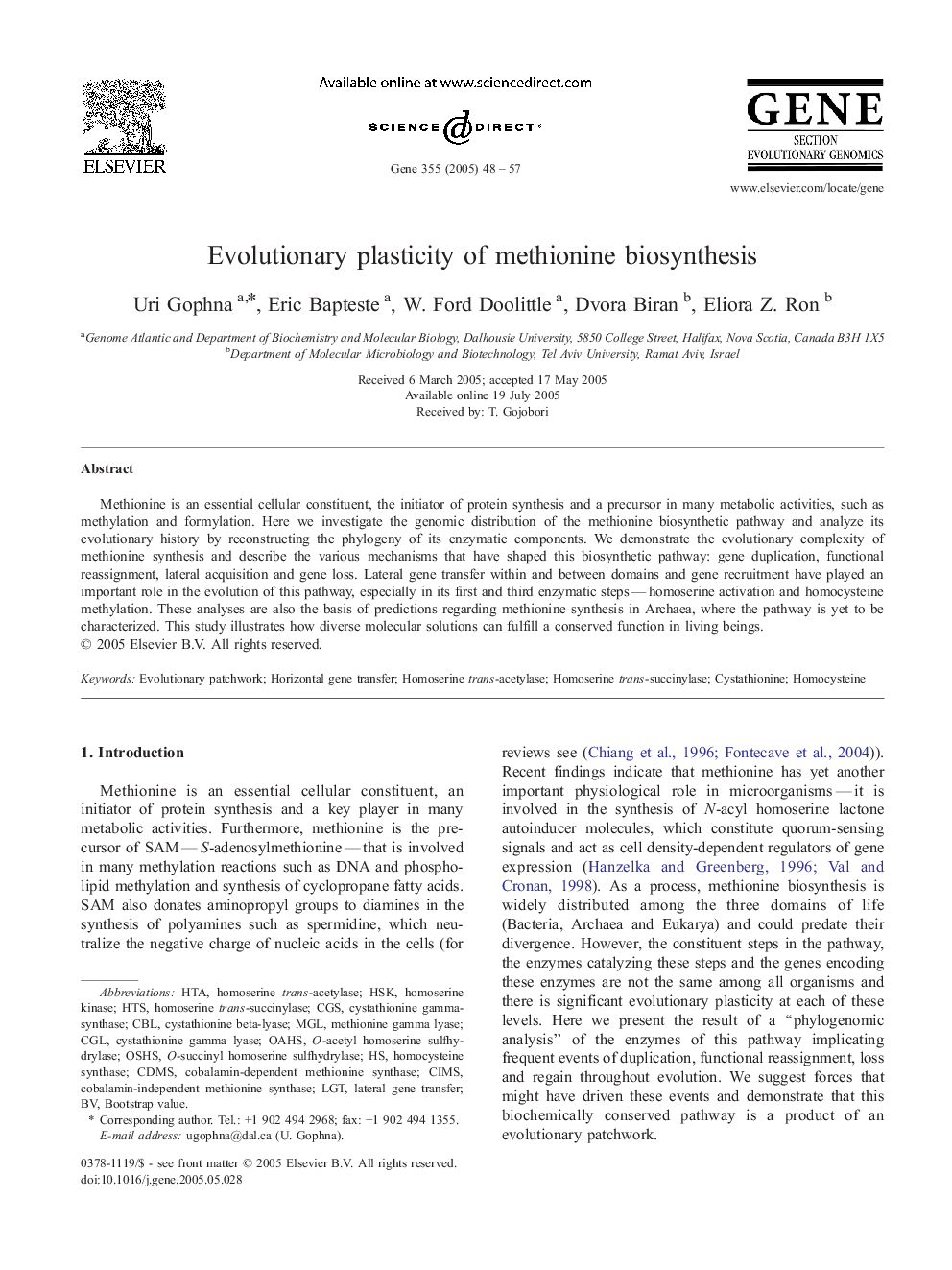| Article ID | Journal | Published Year | Pages | File Type |
|---|---|---|---|---|
| 9127035 | Gene | 2005 | 10 Pages |
Abstract
Methionine is an essential cellular constituent, the initiator of protein synthesis and a precursor in many metabolic activities, such as methylation and formylation. Here we investigate the genomic distribution of the methionine biosynthetic pathway and analyze its evolutionary history by reconstructing the phylogeny of its enzymatic components. We demonstrate the evolutionary complexity of methionine synthesis and describe the various mechanisms that have shaped this biosynthetic pathway: gene duplication, functional reassignment, lateral acquisition and gene loss. Lateral gene transfer within and between domains and gene recruitment have played an important role in the evolution of this pathway, especially in its first and third enzymatic steps-homoserine activation and homocysteine methylation. These analyses are also the basis of predictions regarding methionine synthesis in Archaea, where the pathway is yet to be characterized. This study illustrates how diverse molecular solutions can fulfill a conserved function in living beings.
Keywords
Related Topics
Life Sciences
Biochemistry, Genetics and Molecular Biology
Genetics
Authors
Uri Gophna, Eric Bapteste, W. Ford Doolittle, Dvora Biran, Eliora Z. Ron,
